Support the People's War in India
Archive for
info – Cadres Of CPI Maoist Stage Demonstration In Kannur District
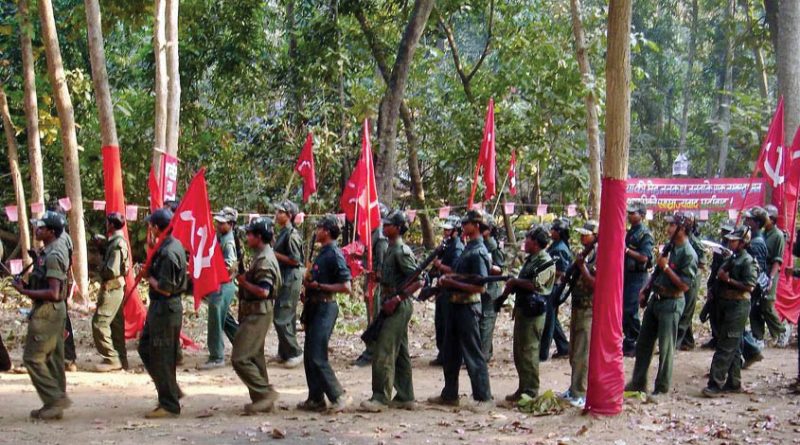
KANNUR: Police have strengthened surveillance after suspected Maoists visited Ambayathode near Kottiyoor in the district yesterday, where they held a demonstration and pasted posters. A case has also been registered under Unlawful Activities Prevention Act (UAPA), said police.
According to the local residents, four suspected Maoists, including a woman, reached the tiny town around 6am on January 20, and pasted the posters after raising slogans against Prime Minister Narendra Modi and chief minister Pinarayi Vijayan, accusing them of having a nexus. Some of them were carrying guns, said the people.
One of the posters, in the name of CPI Maoist, urged the people to cooperate with the ‘Bharat Bandh’ they called on January 31, against the central government’s ‘Operation Samadhan’, to fight the Left Wing Extremism.
The poster alleged the government mission is to create a peaceful path to empower Brahmin Hindu fascists, and for this they are killing and jailing the Maoists, dalits and minority community. It also said the killing of four Maoists at Attapady in Palakkad should be avenged.
Following the Maoist appearance, Kelakam police have registered a case under UAPA and also launched a combing operation, said Iritty ASP Anand R.
“By the time the police launched the combing operation, they vanished into the forest, but we have strengthened the surveillance,” he said.
Earlier also Maoists were spotted in the locality on a few occasions but the police could not trace them.
Assam comes together to form human chain for Akhil Gogoi’s release
The KMSS leader has been arrested in allegations of causing violence and vandalism during the ongoing anti-CAA protestsSabrangindia 22 Jan 2020
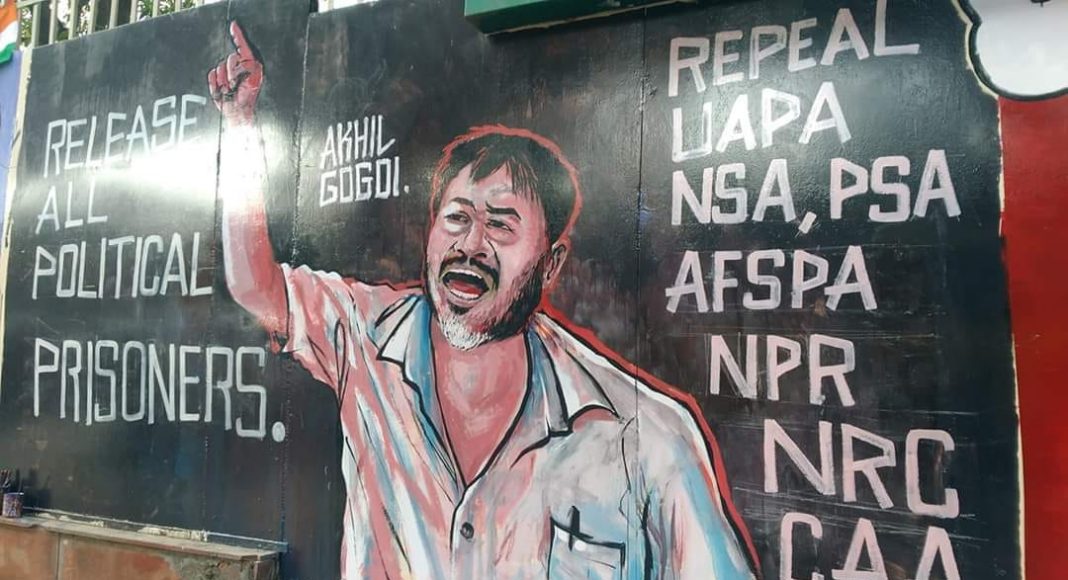
Thousands of people in Jorhat came forward to form a human chain in the shape of the map of Assam, demanding the immediate release of Krishak Mukti Sangram Samiti (KMSS) leader Akhil Gogoi who had been arrested on December 12, 2019 amid anti Citizenship Amendment Act protests and booked under the Unlawful Activities Prevention Act (UAPA).He is currently being investigated by the National Investigation Agency (NIA) for being in an alleged nexus with Maoist rebels, reported The Telegraph. The teams of the NIA also reportedly reached Gogoi’s residence at Nizarapur and the Gandhi Basti office of the KMSS and took away several files, an old laptop, his hand-written diary containing accounts of his time spent in jail earlier and other important documents.The protest held on Monday at the Baisahabi playground in Selenghat against the CAA and in demand of Gogoi’s release was led by the All Assam Students’ Union (AASU) and supported by the Asom Jatiyabadi Yuba Chhatra Parishad, All Moran Students’ Union and other organizations.
Gogoi’s mother Priyada Gogoi who had gone on a hunger strike last month demanding her son’s release, also attended the protest and said she believed her son had been ‘framed’.Popular singer Manas Robin who also took part in the protest asked the people to remain patient and said that the agitation against the CAA would go on till it would be repealed. “Today, Akhil Gogoi may be behind bars but he wants every Assamese to fight for the rights of the people of the state. So we have to continue this fight on his behalf,” he said.Sagar Sonowal and Puheshwar Sonowal from the AASU were detained along with 13 others on the morning of the protests and released the same evening. Sagar Sonowal said, “Instead of opposing CAA, BJP legislators and parliamentarians are supporting the Act which is anti-Assam and unconstitutional.”Meanwhile, the AASU is continuing with its ‘black flag’ protest all throughout Assam.Even the students of Jamia Millia Islamia University have joined the chorus for the release of Gogoi who is being termed as a ‘political prisoner’. The students of Jamia are expressing their displeasure over his arrest by painting graffiti on the walls of the University, turning them into ‘walls of discontent’, reported Time8.
After the most large strike in the world -250 millions! 8 january – asks a new level of analysis of India and a new level of support to PCI maoist – towards a new call for the international solidarity

Assaults Students at Leading Indian UniversityProtests Escalate Throughout India
On Sunday, January 5, fascist thugs attacked students, professors, and university staff at Jawaharlal Nehru University (JNU) in New Delhi, India, one of India’s major universities and known as a progressive campus.
Dozens of masked men, chanting fascist slogans armed with bricks, rocks, and iron rods, charged into campus, brutally assaulting the students and university personnel, forcing them to run “for their lives” as one student said. The mob chased them into their dormitories, forcing students to barricade themselves in their rooms, as the fascists vandalized their dorms, specially singling out progressive or Muslim students to beat up based on the posters and books in their rooms.
“They pelted stones at us, stones half the size of bricks,” one professor who was hit in the head and bleeding profusely told the New York Times. “I saw the face of terror.”
After an hour-long rampage, with the attackers openly roaming around campus menacing people as police stood by and did nothing, at least 42 students and others had been injured, most hospitalized, and many more terrorized. Videos showed police standing by as students were being beaten, having turned off the street lights and letting the mob roam without interference.
Despite revelations by the press of who was behind these fascist mob attacks, as of this writing no arrests have been made—and the only people charged are the victims, including Aishe Ghosh, the student union president, who was hit over her eye with an iron rod and was taken to the hospital.
What has become clear is these thugs are part of or closely associated with the Hindu fascist student group Akhil Bharatiya Vidyarthi Parishad, associated with Prime Minister Narendra Modi’s ruling party and its parent organization, the Rashtriya Swayamsevak Sangh (RSS). One RSS leader defended the assault: “The students of JNU are communists and they had to be taught a lesson.”
The attack on JNU is part of a larger campaign by the fascists to reshape academia to serve their whole fascist agenda, since Modi’s election in 2014. They have moved across the board in undercutting student and university rights, and appointing pro-RSS administrators, while encouraging the forming of Nazi style fascist thug organizations on campuses. JNU, as a leading progressive university, has been in their crosshairs.
“For the Modi government, JNU has been a symbol of the territory they haven’t been able to capture,” a student of the RSS told the New York Times. “They are projecting it as a symbol of everything that is bad in this country, and that is why they need to destroy it.”
This vicious attack of terror sparked a further wave of protests by students and others throughout India, with some erupting that night itself, and spreading through the next week across the country. These student protests are a very positive development, standing in solidarity with the JNU students who have refused to back down, calling for the dismissal of various authorities responsible, feeling, as one student commented, “an unprecedented attack on our existence.” One of India’s top film actresses, along with some other celebrities, joined the vigils of solidarity against the attack, with fascists calling for boycott of their films and art. Many others joined the students who occupied and protested over multiple days and nights at one of India’s most famous landmarks, the Gateway of India in Mumbai.
Background on the Hindu Fascist Assault Since the Re-election of Modi
Modi and the RSS program is to turn India from a secular state, with at least formal rights for all the country’s religious and national minorities, into a fascist state that is a “Hindu rashtra,” i.e., a Hindu country. India has the second largest number of Muslims in the world, with about 200 million Muslims, and this program is a direct attack on Muslims and other minorities.
After Modi’s re-election, their fascist assault on the secular foundations of the India state has recently taken major leaps1—with the withdrawal of autonomy from Kashmir, India’s only Muslim majority state, and millions being declared stateless in the state of Assam, bordering Bangladesh and with a large number of Bengali migrants. They were forced to take a punitive new citizenship test which forced them to produce documents proving they or their ancestors lived in India before 1971 or be declared foreign migrants.
In mid-December the “Citizenship Amendment Bill” was passed in parliament. The bill overtly discriminates against Muslims, making religion a criterion for determining which immigrants can be allowed for Indian citizenship, specifically excluding Muslims from being considered. This goes along with a proposed National Register of Citizens (NRC), which will be an official record of all legal citizens of India where individuals would have to provide a prescribed set of documents for inclusion. These are potentially genocidal measures against the Muslims in India, given the underlying ideological program of the Modi Hindu-fascists.
These draconian, anti-Muslim measures have sparked massive protests, which have cut across religious lines throughout India and that have continued for the past month, with students playing a key and very dynamic role. Savage police attacks and repression have fueled greater outrage and resistance, turning the current upsurge into one of the most powerful student-led protests since the country obtained independence in 1947.
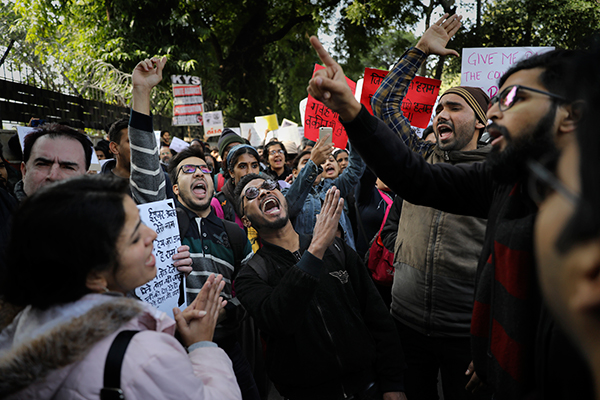
Indian students and activists shout slogans against fascist attack on students by masked men inside Jawaharlal Nehru University in New Delhi, India, January 2020. Photo: AP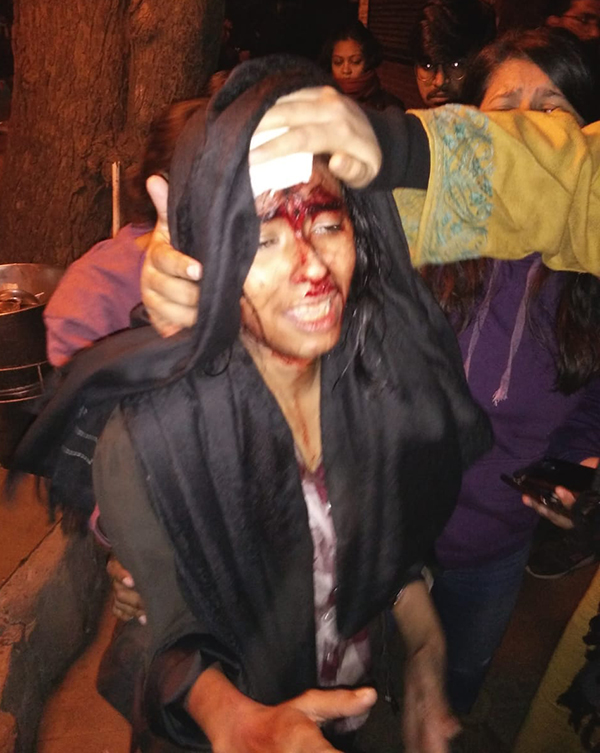
Jawaharlal Nehru University Student Union (JNUSU) President Aishe Ghosh: “I have been brutally attacked by goons wearing masks.” Photo: Twitter
Arbitrary Detention Of Mr. Chandrashekhar Ravan Makes A Mockery Of The Rule Of Law By The UP State Government
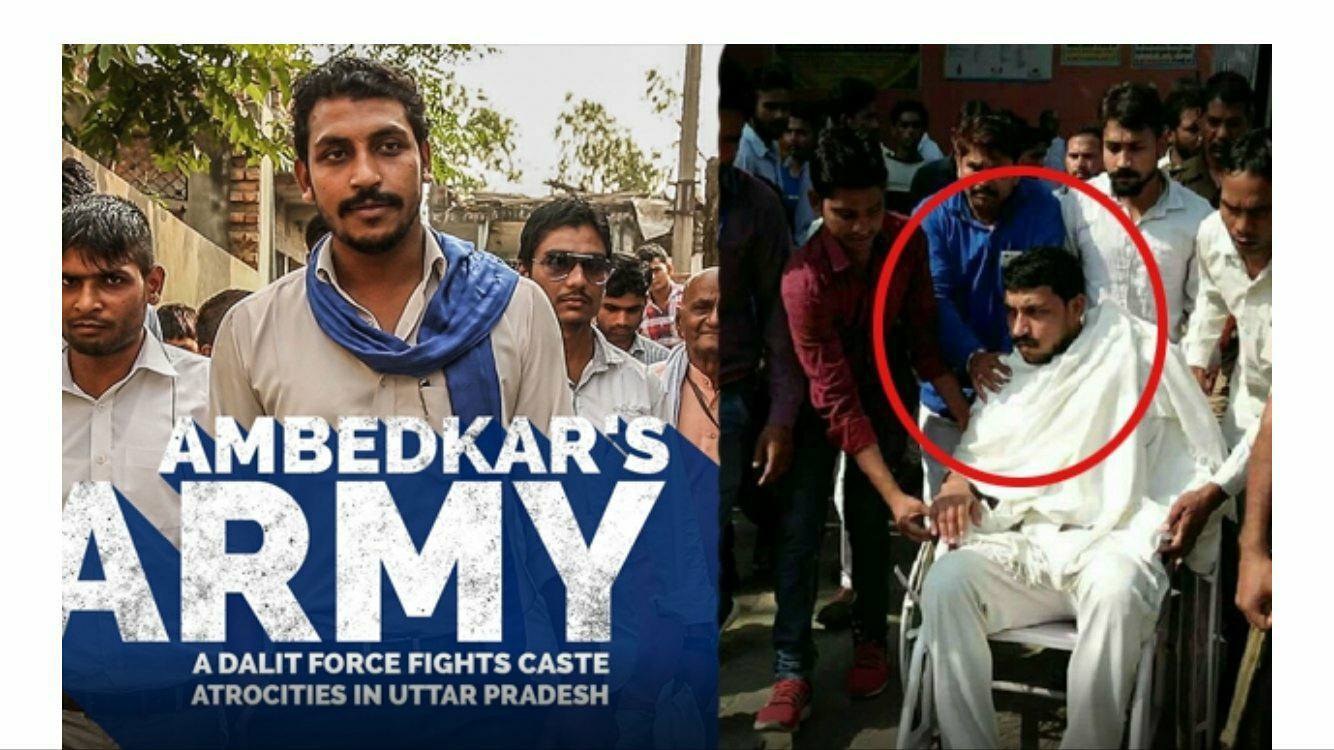
Mr. Chandrashekhar Ravan, the founder of the Bhim Army remains in custody despite the Allahabad High Court granting him bail in all the cases registered against him. Ravan is in custody because of the Government of Uttar Pradesh has registered a case against him under the provisions of the draconian, National Security Act, 1980. The NSA provides for ‘preventive detention’, an act that defies the basic tenets of the rule of law and fair trial. This law allows the arbitrary and abusive use of the power to detain to the police (and state) thereby denying a person all freedoms.
The NSA provides for the detention of those arrested for an initial period up to three months, without trial, which upon the opinion of an Advisory Board constituted by the government under the NSA could be extended for 12 months. The NSA therefore defeats the basic principles of fair trial, and in effect revokes the jurisdiction of judicial magistrates to intervene when the state choses to detain the citizens unlawfully. Under the NSA, bail is no more a right.
Sections 3 (1) (a) and 3 (2) of the NSA empowers the state, that in instances where it is satisfied ‘with respect to any person that with a view to preventing him from acting in any manner prejudicial to the defense of India, the relations of India with foreign powers, or the security of India … to prevent a person from acting in any manner prejudicial to the security of the state or from acting in any manner prejudicial to the maintenance of public order …’ to detain the person. The NSA however does not provide any specific measures for the detained person to appeal against the order of the government against his detention, and prevents the detainee from being represented by a lawyer before the Advisory Board constituted under the NSA.
The NSA also prevents that an order of detention made by the government cannot be challenged because one or some of the grounds for detention is vague, non-existent, not relevant, not connected with the person detained or invalid for any other reason whatsoever. This means the government could detain a person on mere allegations, unsubstantiated in substance or facts. It also means that a person could be detained under the NSA, and that the detention is approved without a right to appeal, by a non-judicial body like the Advisory Board constituted under the NSA and that such a detention could last for a period of 12 months. This is what that makes the NSA one of the most draconian legislations in India. It is no surprise that both the Union as well as the state governments in India resorts to wanton misuse of this legislation.
Evidently, Ravan’s continued incarceration even after being granted bail by the Allahabad High Court makes not only a mockery of the rule of law but also of India’s judiciary. The fact that Ravan is detained despite “the lawful judgment of his equals or by the law of the land” allowing him his freedom, makes the decision of registering a case against Ravan under the NSA a travesty of justice.
The continuing detention of Ravan, in fact, is an open and willful defiance of the judiciary and, along with it, the separation of powers as envisaged in the Constitution of India. As different governments have repeatedly indulged in such travesties, perhaps it is high time for the judiciary to look into the constitutionality of this draconian law, and devise a way to stop the abuse of power by the state through the use of this law, or to declare the law as unconstitutional.
It is a worrying issue in India, that the civil society in the country is silent against this misuse of this law by the government. They have remained largely silent regarding Ravan’s case as well despite medical reports suggesting that Ravan’s health in detention has deteriorated since his arrest in June 2017.
A few human rights organisations have demanded the revocation of charges under the NSA against Ravan, and his immediate release. The Committee for the Defense of Bhim Army (CDBA) has been relentlessly working for his release. Yet, the fact remains that the interventions have been few and far between. Any observer will notice, little worryingly perhaps, that compared to the robust resistance against earlier persecutions of the civil rights activists in the country, the Indian civil society has been slow in its reaction against the incarceration of Ravan, by comparison to the civil society response during the detention Dr. Binayak Sen, or that of the student leader and former Jawaharlal Nehru University Students Union President, Mr. Kanhaiya Kumar or that of Ms. Medha Patkar.
One can only hope that the silences are not reflective of the viciousness of the current regime succeeding in instilling an insidious fear among even the civil rights activists. That being the case would not augur well for the future of the country. That will, in effect, help the incumbent national government turning India into a police state. The horrendous experiences of Indians where yet another draconian legislation, the Armed Forces (Special Powers) Act, 1958, is in force must be a living reminder that should urge every Indian to stand up against the use of legislations like the NSA against civil society leaders.
Mr. Tom Bingham, in his classic The Rule of Law has elaborated this aptly: “The hallmarks of a regime which flouts the rule of law are, alas, all too familiar: the midnight knock on the door, the sudden disappearance, the show trial, the subjection of prisoners to genetic experiment, the confession extracted by torture, the gulag and the concentration camp, the gas chamber, the practice of genocide or ethnic cleansing, the waging of aggressive war.” In India, the midnight knocks have begun. So have the show trials. Need one wait for the rest? It is high time for the Indian civil society to gather itself and fight against repressive legislations for which Ravan’s case is an apt and living example.
Samar is Programme Coordinator – Right to Food Programme Asian Legal Resource Centre / Asian Human Rights Commission, Hong Kong
G.N. Saibaba on the struggle against Imperialism and the environmental question

Q: What about these accusations that these movements are blocking the economic and overall development of the Indian people?
A: The Maoists don’t view these so-called development projects as beneficial to the people. They see this particular kind of development as for the superprofits of the multinational corporations through the superexploitation of the people’s labour. They will degrade the land, and lead to the people being thrown off the land. So this is pro-imperialist development which benefits a section of the ruling classes in India and the imperialists, monopoly capital. The Indian government has announced that the movement is blocking these projects and will be harmful to the people of the region and the entire country. But it is development for the corporate sector, and the people are offering an alternative vision of development, and they are doing it practically, on the ground. There is no case of real government development programmes being blocked by the Maoists. For example, if the government tries to build a school or hospital, then the Naxalites will never block it. Or if they are building something for the people’s economy – but of course the government has no intention of carrying out development projects for the benefit of the people. In addition to these projects for the benefit of the multinational corporations, the only other kind of development projects the government plans are vast projects for roads in the interior areas, to bring in the army and security forces, which definitely the people stop and block.
The question is, what development model has the Indian government adopted for the past 60 years? It is a pro-imperialist development model, which serves the imperialists by giving resources and raw materials to them.
It is better for the people of India and the whole world if the minerals remain underneath the hills and the forests, for two reasons. One, if you want to mine these minerals you will have to displace the adivasis and you will not have any system where they will be fully rehabilitated. And the ruling class has no right to displace them – it is their natural habitat. Second, another major reason why the minerals should not be exploited is that not only will the people be displaced, but that these are vulnerable fragile forest and hilly areas, and if you exploit them there will be irreparable damage to the countryside. It will cause major upheaval for climate change and warming, and the Indian subcontinent would never recover. It would have a major impact on the entire subcontinent. So for environmental reasons and the reasons of people’s lives, these should not be exploited. But there are ways in which these minerals could be mined in minor ways, ways that would not aggravate the situation and displace the people. They could be used in small quantities for the benefit of the people, but that would have to be decided by the people of the region themselves, and not by outsiders.
CPI (M) CC on the martyrdom of comrade Ramanna
COMMUNIST PARTY OF INDIA (MAOIST)
Central Committee
Press Release
12th December 2019
CPI(MAOIST) – Central Committee Member, DKSZC Secretary and People`s Beloved Leader Comrade Ramanna (Ravula Srinivas) – Red Salute!
Fight to Realize the Dreams of Immortal Martyrs to the Last Breath!
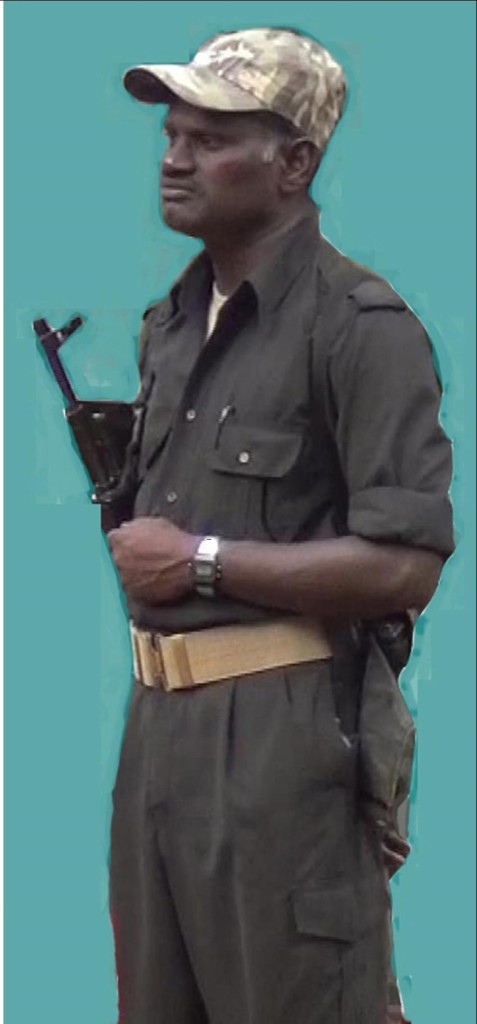
On 7th December at 10 pm, 55 year old, Comrade Ravula Srinivas (Ramanna, Narender) has fell victim to serious illness and died. Since Oct 2011 he had taken the responsibilities of the Dandakaranya Special Zonal Committee (DKSZC) as its Secretary. He was also co-opted as Central Committee Member in Mar 2013. His long 36 year revolutionary life had been linked to all the twists and turns of the Dandakaranya Revolutionary Movement. He was one who had gained lot of respect and confidence of the masses and the cadres alike and was their beloved leader and fighter. In memory of Ravula Srinivas’s dedicated contribution and highest service to the revolutionary movement of India and especially that of Dandakaranya, the Central Committee humbly, with bowed heads pays revolutionary homage and pledges to march forward to realise his dreams. It joins in the mourning of the bereaved family, friends, comrades in arms and the oppressed masses. Our Central Committee appeals the rank and file and the oppressed of the country to make the New Democratic Revolution a success and fulfil the dreams of the immortal martyrs.
Comrade Ramanna born in July 1965, as a sixth child to mother Varamma and father Ramalingam in the village of Bekkal of Byranpalli panchayat, Cheriyalmandal of the then undivided Warangal district of Telangana state. Parents called him Srinivas. The Jangama area of Telangana had been popularly known for the great revolutionary heritage due to the historic armed struggles by the heroic peasants there against the Razakars of the Nizam rule at first and later the Nehru-Patel mercenary army, under the leadership of the undivided CPI. On this land hundreds of fighters had laid their lives fighting with immense courage and valour. In these historic struggles Srinivas’s
grandfather and father were actively involved. Born in this legendary village Srinivas was sent to nearby Dhulmitta high school, where he got acquainted to revolutionary student politics. The revolutionary heritage of his area and that of his family was a great help for him. He joined the Radical Students Union (RSU) in 1981-82. As an active member of his school unit he participated in various struggles of the students. He participated in the 1982 and 83 campaign – “Students and Youth! Go to Village”. In this process he advanced his revolutionary spirits. Understanding the needs of the movement he was sent to Dandakaranya by the Warangal District Committee as a professional revolutionary (PR), as soon as he got his party membership in April 1983.
With a new name Ramanna he joined the Dandakaranya-Bhadrachalam Guerrilla Squad in June 1983 as a member and thereby started his guerrilla warrior life. In Dec that year he was transferred to Konta Squad. In 1985 he became the deputy commander and later in 1987 he became the commander of the same squad. He was promoted to as the secretary of the Konta squad AC (SAC) in 1992. Accordingly gave direct leadership to various mass struggles against the forest and revenue department’s exploitation, torture and oppression, by organising the adivasi masses of Konta, Sukma, Gorllapalli, Dornapaland Kishtaram area. He led the land agitations from the front. Comrade Ramanna was a brave fighter who bravely led the squad in facing the mercenary Police of the enemy and in annihilating cruel Landlords like Kalmu Deval, Burda Wadde. He married his comrade in arms in 1993 and has a son.
After being promoted as Divisional Committee Member (DVC) in 1993, he also became the commander of the first military squad formed in that area. In Mar 1995, as per the needs of the movement he was transferred to North Bastar where he worked under a new name Narendra and led people’s struggles in Keshkal, Kondagaon, Koilibeda and Maad area. He advanced the revolutionary movement facing the enemy’s onslaught. In Sept 1998 he was again transferred to
South Bastar. In Sept 2000, 3rd Divisional Conference, the Division was divided into two diviosions South Bastar Division and West Bastar Division and he was elected as the Secretary of the South Bastar Division. In the same year December, in the Dandakaranya Special Zonal 3rd Conference he was elected as a SZC member. He took up the responsibility associated with his promotion to SZC Secretariat and also as the member of the State Military Commission in 2003. In 2005 he became the
Party Committee Secretary of Company – 2 (CyPC). Later again he was elected as member of the DKSZC in the 4th Special Zonal Conference 2006 and continued as its Secretariat member. He was elected as the Secretary of the South Bastar Sub Zonal Bureau in Dec 2007. He became the Party Committee Secretary of the First Battalion of DK PLGA in Aug 2009 and led many a military actions. This process in the campaign against Jan Jagaran Abhiyan in 1990, resisting and defeating the attacks of Salva Judum (2005-2009) and Operation Green Hunt (2009-2017) Com. Ramanna played an important role. In Oct 2011 first plenum of the 4th Conference of DKSpecial Zone he was elected as the Secretary of the SZC. In Mar 2013 he took up the responsibility of developing revolutionary movement in India, after being co-opted in the Central Committee. He had been severely suffering from diabetes for last 20 years and thus breath his last on Dec 7th 2019 amongst his cadres and PLGA fighters and people, fighting selflessly for the masses till the last. Enemy by creating serious obstacles to bring necessary foods, medicines and arranging treatment to the sick and the injured in the Party and the PLGA forces is violating the internationally accepted law in war effected zones. Hence the death due to non-availability of medical help amounts to murder by the state.
Since he first stepped in Dandakaranya in 1983 till his last breath, comrade Ramanna made his utmost effort as a leader and as a fighter to develop Dandakaranya as the base area as part of the process to successfully complete the New Democratic Revolution of India. In the process to understand the class composition and to identify the class enemy in the adivasi society and get a grip on the social, economical, political and cultural aspects of Bastar he not only played a role in its social investigation but also developed a skill in organising the masses by educating them right from the beginning on the revolutionary politics that ‘only through armed struggle people can win political power’ and succeeded in organising the masses in anti-feudal class struggle. He showed his creative skills in developing the mass organisations and the peoples’ war by organising the masses in antifeudal, anti-imperialist struggles and struggles against state violence. He developed; basing on class hatred the militant people’s resistance movement by incorporating the organised masses in militia
i.e. Gram Raksha Dal (GRD) then in Bhoomkal Militia, Militia Platoons and Militia Companies. He organised the women in class struggles against patriarchy and state violence and in various organisations in large numbers. He faced many a difficulties and ups & downs in guerrilla life with determination. With a strong conviction in the party line and the masses – he played an important role in organising the masses from the village level for class struggle in social, economical, political and cultural fields and simultaneously forming mass organisations, militia, party cells, village party committees and branch committees; and as units of people’s political power – first, a gram rajya committee and then panchayat, area and division level Revolutionary People’s Committee (RPC) and also Coordination Committee of the People’s Revolutionary Jantana Sarkar of Dandakaranya. He exposed the ruling classes and organised the adivasi people of Dandakaranya and led militant movements against false development model proposed by the imperialist-corporate combine; and the Mining Projects like – Bailadilla, Nandraj Range, Raoghat, Hahladi, Kuvvemaari, Surjagarh and Steel Plants like Lohadiguda and Dhurli as well as Bodhghat Dam etc., that aimed to uproot lakhs of people. He motivated hundreds of young boys and girls organised in various fronts to join the PLGA and hence developed and strengthen the PLGA formations. He led in forming and developing the secret people’s intelligence network to counter enemy forces and the informer network of the enemy. He played a key role in facing the continued all round repression along with the LIC policy under which reforms, psychological warfare, psuedosurrender policy were brought out in order to smash the revolutionary movements by the exploiter ruling classes of India. Right from 1987 Kurnapalli, 1992 Lingampalli ambush; Uppermetlla, Tadmetlla, Tongguda, Bhttiguda, Singanmadagu, Mukram, Kassalpad; in 2018 Yelladmadgu, Kasaram; in 2019 Kondasavli, Keshkutul ambush and upto Kalimela and Bailadilla Raids; comrade Ramanna has played a direct and important role and thereby intensify the guerrilla war; especially planning and implementing Mukram ambush and Ranibodhelli raid which had characteristics of Mobile warfare; in arming and developing the striking power of the PLGA by carrying out arms seizure raids in large numbers; he had played an important role. The DK Plenum in 2011 evaluated that the Dandakaranya revolutionary Movement was going through a difficult times. In this situation also without least hesitation, to advance the movement he carried out the task of leading the DKSZC as its secretary boldly.
Comrade Ramanna’s revolutionary spirit, daring, simplicity and hardships lifestyle, has become ideals for communist revolutionaries and guerrillas. In every twists and turns we have seen him gelling with the masses and cadres. His farsighted efforts to develop people’s resistance movement and guerrilla war by raising political consciousness and class hatred in the people to develop Party, PLGA and United Front; is an example in front of all comrades. He hated surrender and escapist tendencies within the party and developed the consciousness necessary in facing such tendencies in the cadres and masses like any good communist revolutionary and a real son of the proletariat. The revolutionary ideals established by him will continue to inspire the revolutionaries in future.
Dear comrades and oppressed masses! Come let us pay homage to the beloved revolutionary leader of India, warrior and immortal martyr Com Ravula Srinivas! Let us raise his spirited ideals in the masses!Come forward with determination to fill up the wide gap created by his loss! Let us commemorate immortal martyr Com Ramanna by carrying out Memorial meetings all over India, especially in all the divisions and all the villages of Dandakaranya! Let the slogan to “Advance the Protracted Peoples’ War to defeat the counter revolutionary Samadhan war tactics of the central and the state government launched against the Revolutionary Movement” reverberate the skies! Hold steadfastly to the promise to take the task of completing the New Democratic Revolution leading to Socialism and Communism, to fulfil the dreams of thousands of revolutionary martyrs!
Abhay
Spokesperson Central Committee
Support people’s war led by PCI(Maoist) in India
CPI Maoist Appoint New Head Of Militia Operations In Chhattisgarh State
J
Raipur: Nearly a month after the death of Maoist leader Ravula Srinivas, better known as Ramanna, who had a bounty of Rs 1.4 crore on his head, security forces in Chhattisgarh will now have to deal with a far more radical face — Hidma.
Hidma, who had been heading Naxal attacks in Sukma district, has now been made state in-charge of the CPI (Maoist) organization’s militia actions, particularly planning and execution of attacks against security forces.His elevation is seen as an attempt by the Maoists to fill the void resulting from the death of Ramanna in the second week of December.
Senior police officers deployed in anti-Naxal operations said there has also been a churn in the CPI (Maoist) central committee on whether to elevate Hidma, or other cadre leaders such as Ganesh Uike and Sujata, as chief of the Dandakaranya Special Zonal Committee (DKSZC).
The DKSZC works as an ideological wing of the outlawed organisation and is engaged in making policies and planning for propagating Maoist ideology. The state-level committee also monitors the militia actions of the Naxals.
The DKSZC was headed by Ramanna. It also works as a think tank for Chhattisgarh, and Gadchiroli in adjoining Maharashtra where Maoists have a presence.
“So far there is no confirmation, neither do we have any recovery to substantiate if Hidma has been given any new task as DKSZC head but security forces are prepared for any eventuality irrespective of which Naxal leader has been given what tasks,” Sukma Superintendent of Police (DSP) Salabh Sinha told ThePrint.“Hidma is a known hard militia task master and had been heading their Battalion 1 in Sukma for more than two and a half years now,” Sinha added.
Hidma’s elevation as Naxal military wing head for the entire state was necessitated due to sagging morale of the outlawed organisation’s cadre owing to increased offensives by security forces in Bastar and other Maoist-held areas.
A brutal commander
An officer from the state police’s Intelligence wing said Hidma will be a big challenge for security forces as the Naxal commander, known for his brute force and merciless killings, is a master strategist in planning attacks.
He is believed to have played an important role in all major attacks against security forces since2013. This includes the Jhiram Ghati attack on a Congress convoy in May 2013 leading to the death of 27 party leaders, and two other big back-to-back offensives, one being the well known Burkapal attack against security forces in 2017 that left 25 CRPF personnel dead.
A senior police officer from Bastar range said the Burkapal attack helped Hidma earn nomination as the youngest tribal member of CPI (Maoist)’s central committee, the banned organisation’s apex body, in 2017. He has earlier been inducted as the youngest member of the DKSZC as well.
There is, however, no confirmation on whether Hidma will head the DKSZC too.
“Although discussion as to Hidma’s elevation (as DKSZC head) within Maoists cadre was being heard for sometimes now but there is no confirmed news so far,” Bastar Range Inspector General of Police Vivekanand Sinha told ThePrint.
Sinha, however, claimed that going by his past record, it’s unlikely that Hidma will be made head of DKSZC, mainly for his ill conduct with villagers.
Another senior officer involved in anti-Naxal operations said the notorious Maoist leader is known for extorting, looting and harassing villagers, though he is stated to have mended his ways of late to impress the central committee for a bigger role in the organisation.
It’s, however, unlikely to work as there are seniors such as Sujata and Ganesh Uike, with the former standing a better chance as Uike is not keeping well these days.
Hidma, however, cannot be ruled out for the DKSZC head due to his tribal origins. His elevation will also help Maoists counter charges that local tribals are being used only as foot-soldiers and not given any bigger responsibility in their organization.





